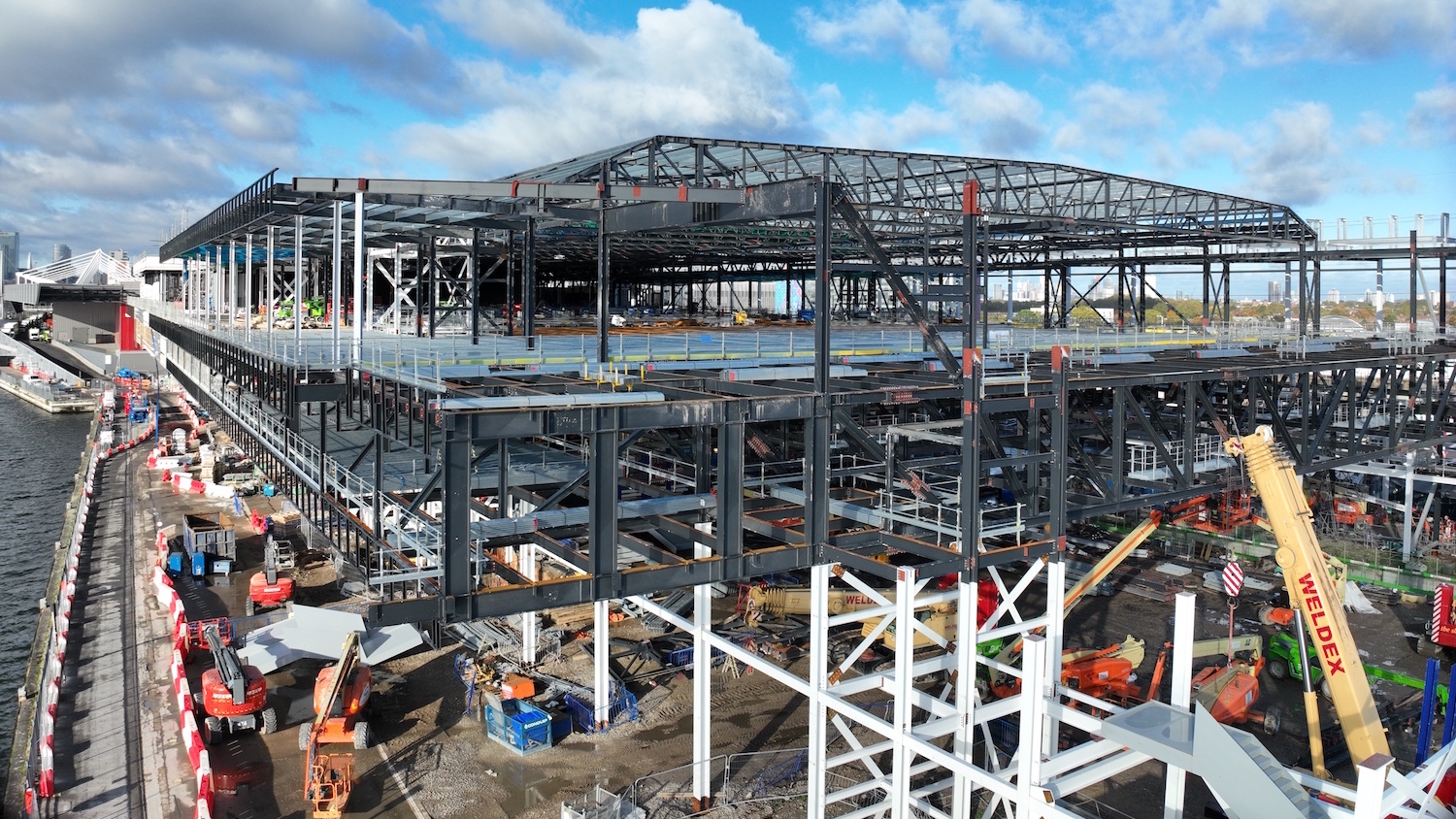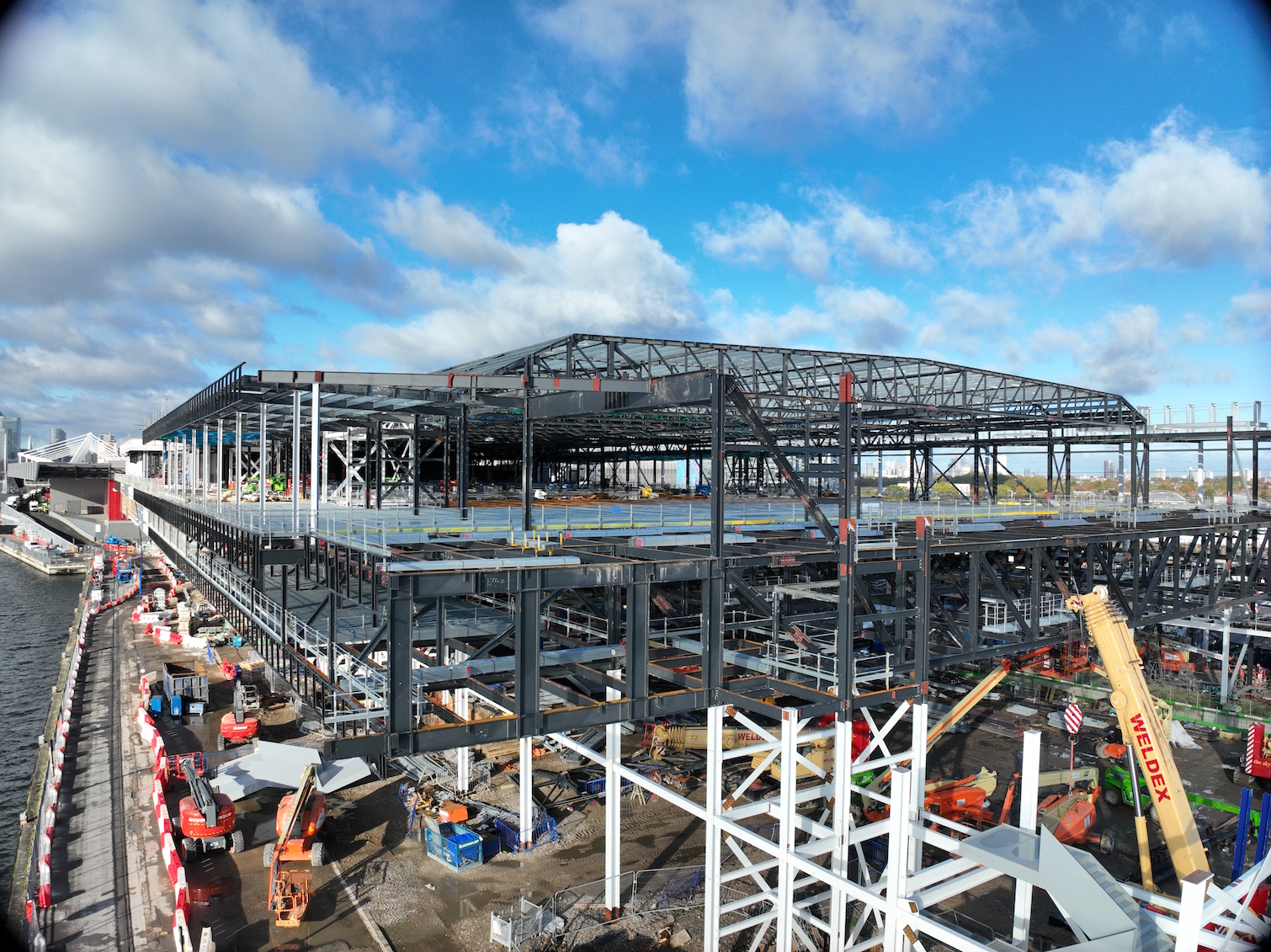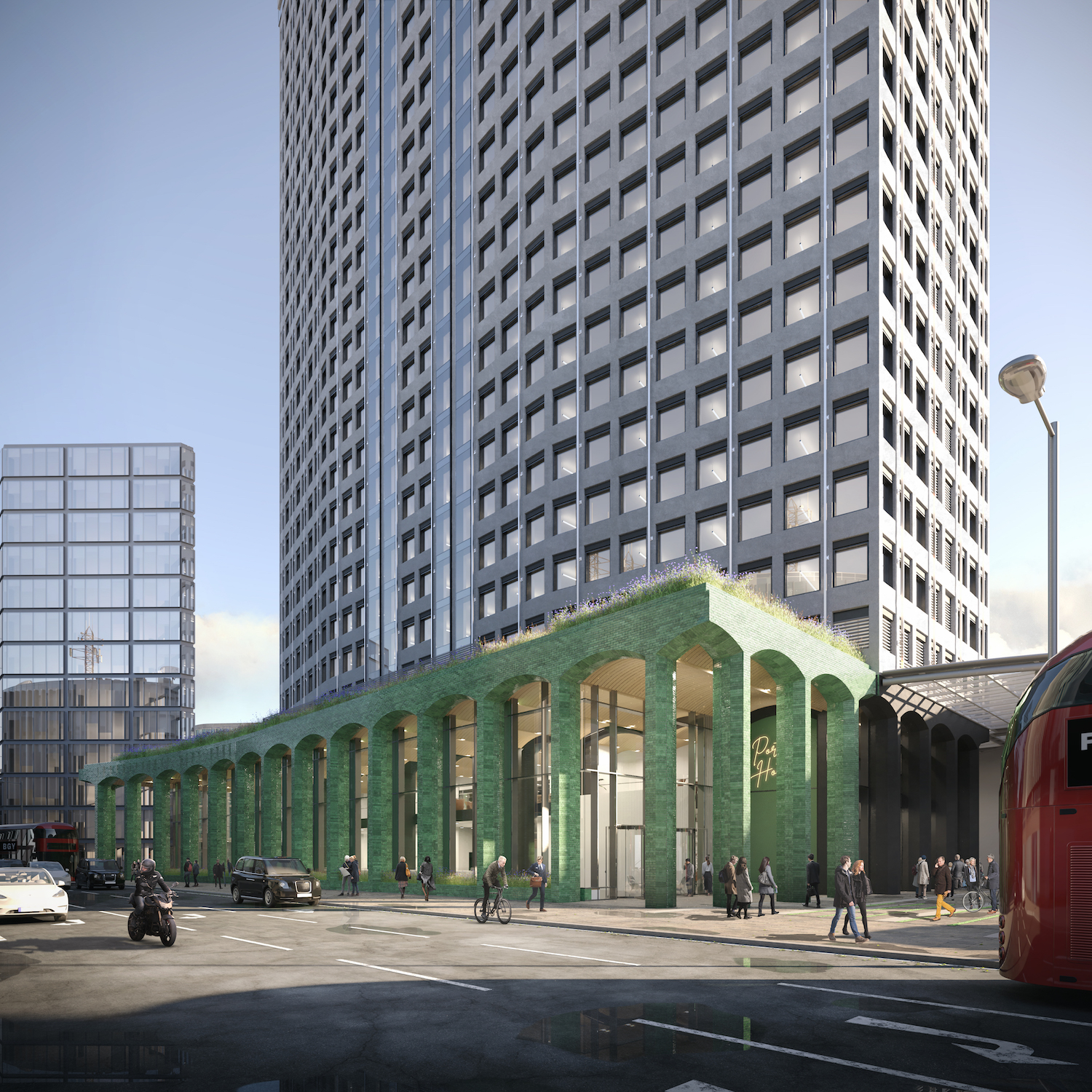
Improving digital construction was the brief McLaren Construction gave Thomas Flannery when he joined in late 2022, and that’s exactly what the contractor is doing on £500m of projects.
McLaren Construction is on course to break the £1bn annual turnover barrier in 2023/24. That’s some going for a family business that only started life in 2001 and that now employs 900 people.
Notable projects have included ExCeL London’s expansion, continuing work on developer Quintain’s Wembley Park build-to-rent estate, the Salvation Army’s new HQ, an F1 head office facility for Aston Martin and projects for top developers such as British Land, Argent, Tishman Speyer, Aviva and Landsec.
But as Thomas Flannery, head of digital construction at the firm, says: “Sometimes when organisations grow very quickly, their systems don’t necessarily grow at the same rate. So we needed to align a lot of our processes and systems to reflect the fact McLaren is now a Tier 1 £1bn contractor.”

"When organisations grow very quickly, their systems don’t necessarily grow at the same rate. We needed to align our processes and systems to reflect that McLaren is now a £1bn contractor."
And that’s where Flannery comes in. He joined McLaren in November 2022 from Lendlease, where he was the digital engineering lead, working across big regeneration schemes like Elephant Park in south London.
“When I joined, McLaren already had an existing strategic report, authored by Adam Nicholson, pre-construction director. I came in to look at the existing strategic report, and evaluate the existing digital environment – looking at how we go about delivering our projects,” Flannery says.
He has grown the digital team to a core of 16 or 17 and implemented a new software regime that is transforming internal efficiencies and has won a big thumbs up from across the company.
Flannery talks in more detail about his role and delivering on the McLaren strategy.
BIMplus: Please talk us through your role.
Thomas Flannery: McLaren used to rely quite heavily on external consultants, so one of my key roles was to build out the digital construction team to an appropriate size for a Tier 1 contractor.
I looked at the existing software partners and vendors, and tried to establish what the perception of software was in McLaren, to see if there was a negative perception, and if so, understanding the reasons for that.
I also looked at the processes that we had in place – how we were going about delivering projects, not just digitally but also looking at how we manage data across the organisation.
Since that initial assessment, we’ve grown the digital team to a core of 13. They’re not all digital construction professionals, as we’ve also integrated the information management function and have dedicated implementation managers that look after software deployment, support, etc.
The perception in organisations I had worked in previously was that there was no alignment – you’d have the BIM managers over here and the information managers somewhere else. But we’ve brought them together, with a real focus on information flow and information exchange within McLaren.
We also re-evaluated how we were working with our existing software, we looked at how we were deploying that on projects, and got that into a much better state – making better use of the existing systems.
And we decided to only bring in new technology where necessary. We decided early on that we were going to look at our field management software, re-evaluate that – health and safety forms, permits, etc.

Delivering digitally: ExCel expansion
The ExCeL London expansion is one of more than 10 McLaren projects that were digital from day one with a digital construction strategy agreed with the project team at the outset. Key platforms being used include Dalux for field management activities, BIMcollab for issue management, Synchro for construction sequencing and Oculo for progress capture.
The £220m expansion of ExCeL London will extend the venue’s existing 100,000sq m exhibition and conference facilities by 25%. As well as it being crucial for ExCeL that its non-stop programme of events go undisturbed, the construction project accommodates other sensitivities. Specific to this location are the flight path into London City Airport and proximity to a Docklands Light Railway viaduct on one side and the 13m depth of water in the Royal Docks. Noise and lighting must take account of guests in neighbouring hotels while footpaths linking to the exhibition centre are kept presentable and road deliveries are maintained.
McLaren took over the project as the main contractor in November 2022 with a streamlined approach and committed to delivering in time for the venue’s October 2024 event programme.
So we entered into an enterprise agreement with software specialist Dalux. Our philosophy has been trying to go with the best-in-class technology provider. We have Asite for our main CDE, we’ve got Dalux working as our field management platform, and we’re also using Solibri as our main tool for design coordination.
Working with open BIM and open data formats across the organisation: that has been a real focus. And in the last year we’ve been setting up the digital environment, getting the processes in place, building out what was a limited library of templates and documents to deploy on this project. We’ve now got a set of very developed procedures in place, and not just in digital construction, which allows us to adopt a consistency in deployment.
From a digital construction perspective, we’re delivering £500m-plus worth of projects – that’s about 30 projects, and that includes where a client’s specifying asset information requirements. McLaren is now able to respond quickly to client needs, it’s become a very agile organisation.
How is building safety handled?
When I joined, there was a lot of internal focus on the Building Safety Act – we were looking to see how we’d best respond to these new legislative requirements, particularly related to the golden thread. As a principal contractor, we needed to be able demonstrate to the regulators what’s considered compliant construction evidence.
As a result, when it comes to appointing our supply chain now, we’ve developed our own unique approach to specifying information requirements as a contractor, where we build in this need for compliant construction evidence. It gives us a very high level overview that we can then use as part of a higher-risk building building control application. We can demonstrate that golden thread, which allows the building safety regulator to digest our approach and quickly facilitate timely building control decisions.
Is that in place now?
It’s been piloted. We’ve rolled it out on one project, taken some feedback… We did a review yesterday, we’re evolving it. The idea is that we will put that on our projects from April.
What software are you using for that?
It’s just a spreadsheet at the moment. It’s a specification document really, but we are looking at other options. Once we get the documents in place, we want to look at how we then integrate it with our key systems, as well as using Microsoft Fabric for our data lake, or data warehouse, where all of our data is fed. We want this information document to act like our Rosetta Stone for information deliverables onto a project.
We’re speaking to a couple of consultants about coming up with a bespoke solution that would allow us to track the data that we’re getting from Asite and Dalux against what we’re asking for in the exchange information requirements that we set up at the start of the project.
We’ve achieved quite a bit over the past 18 months since I’ve been with the organisation. And we know what we want to do over the next 12 months. The strategy is constantly evolving and growing.

Delivering digitally: Thirty High
Landsec appointed McLaren last October as the main contractor for the refurbishment of Thirty High, a 1960s landmark tower in Victoria, London, into an office-led destination.
Digital construction has proven to be indispensable for the Thirty High project, extending beyond its conventional 3D coordination role. McLaren has used point cloud scans of the existing asset, providing precise photogrammetric data crucial for the design process. Additionally, it has leveraged 4D modelling to meticulously plan project logistics and construction sequences, ensuring the project progresses according to schedule.
The 300,000sq ft tower is due to complete in 2025, at a total cost of £400m.
It’s all helping us improve productivity and efficiency. We want to be a lean organisation: we don’t want to increase our overheads as we grow. It’s all about organic growth and profit for McLaren.
To grow without increasing overheads too much, you need efficiencies. And one of those is digitising internal processes. You can make someone’s job a lot easier by giving them the right tools and technology, and making the admin side of their job much easier and more streamlined. And that frees them up to get out on site and build projects.
How do you measure success?
You can look at the uptake. Asite is being used a lot across the organisation. And with Dalux, in the eight months since we entered the enterprise agreement, we’ve got 14,000 tasks and forms that have been opened. In the past, some of those might have been paper and pen and kept in a folder on site. That’s definitely an efficiency gain. And we also get good feedback from site teams: using Dalux makes their job a lot easier, it gets the information into their hand.
We’ve invested quite a bit in things like iPads, laptops, iPhones. Our IT department says they see the uptick in the amount of bandwidth required on a project. And that is a by-product of the digital strategy we’re deploying.
We’re doing digital workshops across the organisation – we call it ‘delivering our projects digitally’ – which has presented the digital strategy to everyone, getting project leaders exposed to it. Part of the reason for this is to help people transition into the new way of working, and based on the feedback to date, they’re buying into it as well.
What have you learnt in the process?
One thing it has emphasised is the importance of relationships. That’s definitely been a learning – bringing people along on the journey was really important. And the relationship we’ve got with IT has been quite refreshing. IT are quite happy for us to be the front of house, own the system, deploy it onto the project. And we’ve got their support if anything technical goes wrong, back of house… we know who to go to.
Don’t miss out on BIM and digital construction news: sign up to receive the BIMplus newsletter.














